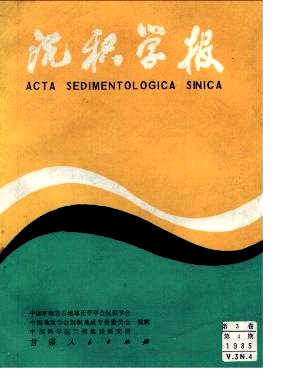CLAY MINERALS IN FINE-GRAINED SEDIMENTS AT CHANGJIANG ESTUARY AND THEIR GEOCHEMICAL CHARACTERISTICS
- Received Date: 1982-03-16
- Publish Date: 1985-12-10
Abstract: It is clear that different clay minerals are usually of different grain size. In order to study their interrelationship, six grades of grain size were seperated in this paper ( i. e. 0.5μ, 1μ, 2μ, 4 μ, 8μ, and 20μ) , their mineral composition and geochemical characteristics were examined. Minerals from treated samples were identified and quantitatively calculated by means of X-ray diffraction and electronic microscope. Meanwhile, atomic-absorption spectrum was applied to certain elements contained in various grades of grain size in quantitative analyses.Based on the above data,it is recognized that clay minerals, are mainly composed of illite and secondly chloride, kaolinite,montmorillonite, etc.. Minor hydrated kaolinite minerals can also be seen under electronic microscope.Based on the comprehensive analyses, the conclusions on the correlation between sediment grain-Sige,minera Iconstuction and chemical composition have been drawn as follows: 1 With the increase of sediment grain-size, the clay mineral content decreases and the clastic mineral increases. The clay mineral dominates the sediments with a grain-size0.5μ; quartz is low in content; feldspar and calcite are hardly seen. On the other hand, in sediments with a grain-size of20μ clay mineral decreases in contenti quartz and feldspar increase in amount and clastic minerals, such as calcite, dolomite and mica can also be found. 2 Montmorillonite content decreases with the increase of sediment grain-size, so does the kaolinite content. This relationship becomes apparent while the grain size of sediments increases up to 8μ.However, chloride content is contrary to the kaolinite content as the grain size of sediments increases. No clear correlation can be observed between illite and its grain size. 3 The contents of K, Fe, Co, Ni, Zn and Cu decrease while these of elements, such as Ca, Na, increase as the grain size of sediments increases. 4 The properties of regional distribution of clay-mineral content are modified mainly by the salinity of water media as well as grain size. From the estuary to- wards seashore, montmorillonite and chloride increase in content while the kaolinite content decreases. 5 Elements in sediments, such as Fe, Mn, Ni, Co, Cu and Zn, occur mainly in a state of absorption while Na, Ca exist right in the crystal lattice of minerals.
| Citation: | Lu Qianrong, Wang Xiaojing. CLAY MINERALS IN FINE-GRAINED SEDIMENTS AT CHANGJIANG ESTUARY AND THEIR GEOCHEMICAL CHARACTERISTICS[J]. Acta Sedimentologica Sinica, 1985, 3(4): 141-153. |






 DownLoad:
DownLoad: